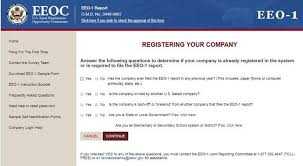NOV 2023, Vol 20, Issue 11
Overview
- Employers Must Begin Using the New Version of Form I-9
- Boost Employee Engagement
- Tips for Properly Filing an EEO-1 Report
- Change for Multi-Establishment Employers
Reminder Employers Must Begin Using the New Version of Form I-9
The new version of Form I-9 was released by U.S. Citizenship and Immigration Services on August 1, 2023. Effective November 1, 2023 employers must use the revised Form I-9. Use the following link to access the revised Form I-9 Form: https://www.uscis.gov/sites/default/files/document/forms/i-9.pdf
- - - -
Boost Employee Engagement
We all know that the past few years have been tough on employees as well as on employers. According to Gallup’s “State of the Global Workplace:2023 Report” 31 percent of employees feel engaged at work and 52 percent are experiencing significant stress on the job. We also know that there is a correlation between organizations with high employee engagement have lower turnover, greater productivity, and higher revenue than those with low worker engagement.
What can we do to boost employee engagement and improve morale? There are a variety of different things that organizations can do that may not be in a position to pay top dollar for talent. First value employees.Here are a few ideas you may want to consider trying:
- Find a way to have fun every day and spread joy throughout the organization.
- Take time to find out why an employee isn’t performing up to expectations and guide them.
- Make employees feel that you care about their well-being and encourage self-care.
- Show gratitude for the contributions your employees make to your organization.
- Make sure employees are comfortable coming to you with issues or errors.
- Offer a degree of flexibility to facilitate work/life balance.
- Have your employees’ backs and make sure they aren’t afraid to go up the ladder to fix a problem.
- Make sure that each employee has a clear career path.
- Show employees that they are valued by providing training opportunities for them.
- Make sure your employees have the tools they need to do their jobs.
- Keep employees “in the loop” on company moves, plans and direction and gather feedback from them on what’s working and what isn’t.
- Spread kindness by doing volunteer initiatives for non-profits that your employees are passionate about.
- - - -
Tips for Properly Filing an EEO-1 Report
The U.S. Equal Employment Opportunity Commission (EEOC) recently released an updated instructional bookletto help employers properly fill out their 2022 demographic data on the EEO-1 form. The EEOC has worked to modernize the collections and improve the quality of data collected. The agency is not requesting any new type of demographic data. It's the same categories that have been requested in past collections.
Private employers with 100 or more employees and federal contractors with 50 or more employees must submit annual EEO-1 reportsthrough the EEOC's online filing system.
- Companies can start submitting their demographic data on the EEO-1 form on October 31, 2023 and submissions are due by December 5, 2023.
- After December 5th, the EEOC will send a "failure to file" notice, instructing employers to submit their data no later than January 9, 2024, if they haven't done so already.
- After January 9th, no more reports will be accepted, and employers will be considered noncompliant if they haven't submitted their data already.
- Employers should pick a pay period between October 1, 2022, and December 31, 2022, to use to provide a snapshot of their employee demographics.
The purpose of collecting the demographic data is to support the agency's enforcement actions, facilitate research on employment patterns, and encourage self-assessment by employers, according to the EEOC. The EEO-1 form does not include pay data.
- - - -
Change for Multi-Establishment Employers
A multi-establishment employer is an organization with more than one establishment where business is conducted or where services or industrial operations are performed.
- Beginning with the 2022 data, multi-establishment employers will no longer be required to file a separate type of establishment report based on the size of each non-headquarters establishment. Instead, there is a newly named establishment-level report used to submit demographic data for each of the non-headquarters establishments, regardless of size.
-
Multi-establishment employers will still be required to submit a headquarters report and a consolidated report.
- The headquarters report should include all employees working at the headquarters and remote employees who report to the headquarters.
- The consolidated report for multi-establishment employers will be auto-populated and auto-generated with data from their headquarters report and each establishment-level report.
Racial Demographics
- On the EEO-1 form, the demographic data is broken down by race and sex under these job categories: senior-level executives, midlevel managers, professionals, technicians, sales workers, administrative support workers, craft workers, operatives, laborers, and service workers. Companies give the EEOC the data in aggregate, so individuals aren't identified.
- Currently, the categories for race on the EEO-1 form are white; Black or African American; Native Hawaiian or other Pacific Islander; Asian; American Indian or Alaska Native; or two or more races.
- People of Middle Eastern or North African descent would be listed as white.
- Hispanic or Latino is categorized as an ethnicity, not a race, on the form.
Nonbinary Employees
The EEO-1 form does not have a box to designate the gender of employees who are nonbinary. Instead, employers can voluntarily use the comments section to note the number of nonbinary employees.
- When reporting nonbinary employees in the comments section of the reports, employers should preface the data with the phrase "Additional Nonbinary Employee Data."
- If an employer includes the number of nonbinary employees in the comments, it should not include those employees in the male or female categories within the reports.
- - - -
Contact HR Strategies at 302.376.8595 or info@hrstrategies.org if you would like support or would like to learn more about the items in this newsletter. Please contact us if you would like to be added to our Monthly Strategies mailing list or if you would like for us to add someone to our mailing list.



